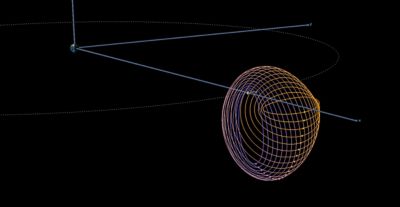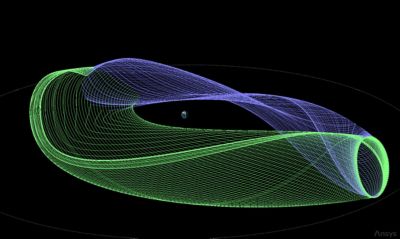-
-
Access Free Student Software
Ansys empowers the next generation of engineers
Students get free access to world-class simulation software.
-
Connect with Ansys Now!
Design your future
Connect with Ansys to explore how simulation can power your next breakthrough.
Countries & Regions
Free Trials
Products & Services
Learn
About
Back
Products & Services
Back
Learn
Ansys empowers the next generation of engineers
Students get free access to world-class simulation software.
Back
About
Design your future
Connect with Ansys to explore how simulation can power your next breakthrough.
Free Trials
ANSYS BLOG
April 3, 2024
Mission Design and Performance Analysis Made Easy with Ansys STK’s Cislunar Orbit Designer
Cislunar space is defined as the volume of space that encloses the region where motion is primarily governed by the combined, simultaneous gravity of the Earth and Moon. This orbit regime is becoming increasingly popular, with dozens of new missions planned for the next few years, and there is a well-established need for capabilities to effectively design missions in a relatively easy and fast way. Ansys Systems Tool Kit (STK) provides all the necessary fundamental elements to successfully design such a mission, but to this point, significant expertise in the theory and applications associated with the process has been required. While the associated work aptly remains “rocket science,” Ansys is working to bring dramatically more approachable tools and workflows to mission designers, analysts, and operators working in the cislunar domain.
Ansys is excited to announce the Cislunar Orbit Designer (CODE), an STK automation that makes the mission design and relevant performance analysis of cislunar trajectories incredibly straightforward. CODE remains in the active prototyping and development phase, so contact us if you’d like to learn more about STK software.

L2 southern halo orbits
Streamline Orbit Design with CODE
Currently, CODE works side by side with STK, using its powerful computational capabilities for all the necessary parameters and simulation mechanisms that fully characterize the three-body, cislunar system. The CODE application comes with an embedded database containing representative orbits belonging to dozens of different orbit families associated with the Earth-Moon dynamical system. Each of the orbits in these families represents a possible segment for a mission architecture. Components of the trajectory solutions associated with Artemis emerged from analysis of such orbits, namely the distant retrograde and near-rectilinear halo orbits.

Stable(green) and unstable (purple) manifolds arcs associated with an L1 Halo orbit
An efficient filtering and interpolation system enables easy selection of individual orbits or a subset of orbits that best fit specific mission requirements. Stability characteristics, energy levels, and other descriptive information for each orbit in a family are also available to help guide design decisions. This data is presented through compelling charts that offer insights at a glance and are accessible throughout the CODE environment. Once selected, orbits can be inspected directly and populated into STK for advanced analysis and design activities. Orbits from the database can be sorted by period, energy level, and stability index.
Gain Insight into the Cislunar Environment
A powerful embedded option in CODE is “Constellation Mode,” which enables the design of a constellation of satellites spread along any available orbit in the database. Such a constellation, with individual satellites spaced around the orbit and initiating from the same epoch, facilitates workflows to answer questions of visibility to the entire orbit at a given time versus visibility to only a single point in the orbit. Consequently, navigation and communication analysis in the cislunar environment has never been easier.
Finally, CODE supports manifold generation. The most common application of the concept of the mathematical notion of a manifold in this context is that of natural flow pathways away from or into a periodic orbit. Any orbit in the database that reflects the appropriate stability characterization can be slightly perturbed along its path in position, velocity, or a combination thereof. Then, those perturbed states are propagated both backward and forward in time, producing trajectory arcs that represent the skeleton of the associated manifold surfaces. These arcs provide options to analyze possible low energy transfers between orbits and orbit families.
This is the first installment in a three-part series on STK’s CODE capability. A deeper dive into the theory associated with manifolds in this problem space is the subject of the next offering in the series.
Learn more about Ansys Systems Tool Kit (STK).